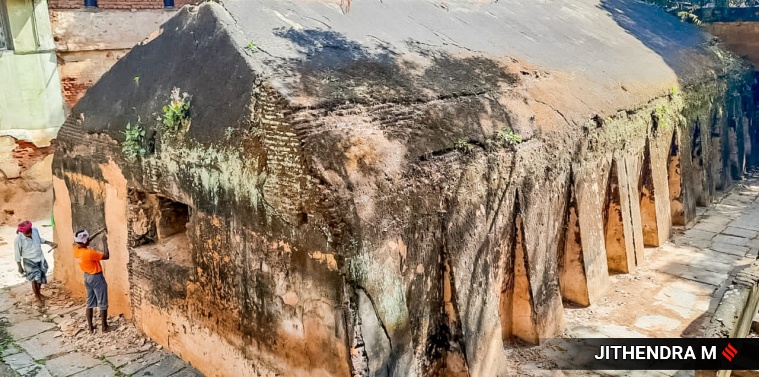While inclusion of the lesson on Tipu Sultan in school textbooks remains a matter of contention, the landmarks left behind by the 18th century ruler in Bengaluru deserve a chapter of their own.

An important part of Bengaluru’s history because of its role in several battles, the armoury is among the four colonial structures that still remain in the region, the others being the Delhi gate, Tipu Sultan’s Summer Palace and the Kote Venkateshwara temple.
Established in the late 18th century, it was one of the 10 underground armouries built by Tipu Sultan and was referred to as the ‘grand magazine’. The armouries were usually half-buried to prevent damages to the surrounding areas in case of any explosion or fire. The entrance to the armoury has no door, the interior is just a hollow space roughly 12 foot x 30 foot in dimension, with just a small window for ventilation and light.
According to historians, Tipu’s armoury was built using brick and lime mortar because of which it still holds its strength. Given the term ‘grand magazine’, it stored weapons associated with gunpowder like cannon balls, rockets and ammunition and was set up close to the wall of Bangalore Fort established by Kempegowda. “Usually, armouries are constructed near fort walls or fort entrances to respond to attacks by enemies. For quite obvious reasons, no houses were allowed to be built near them,” says Meera Iyer, convenor of The Indian National Trust for Art and Cultural Heritage (INTACH). In fact, INTACH took up efforts to preserve the armoury in 2005 and list it under ‘protected monuments’.
 An important part of Bengaluru’s history because of its role in several battles, the armoury is among the four colonial structures that still remain in the region.
An important part of Bengaluru’s history because of its role in several battles, the armoury is among the four colonial structures that still remain in the region.
The armoury in Bengaluru was significant to Tipu’s military strength to defend enemies attacking the Mysore kingdom. Although Srirangapatna was the capital of the Mysore kingdom, Bengaluru was also an important location back then, bustling with traders and witnessing the emergence of a new township.
The armoury was also known for storing and experimenting with rocket technology. According to reports, Hyder Ali and Tipu Sultan pioneered in developing and using rockets in the war against the British. These “missiles” were fitted with swords. On firing them, the rockets travelled several metres through the air before coming down, with the edges of the sword facing the enemy. Even before they hit the ground and exploded, the swords managed to injure soldiers. The use of iron tubes for holding the propellant at one end of the sword enabled higher thrust and longer range, of up to two kilometres, for the missile. This was later used to advance European rocketry.
Story continues below this ad
Historians point out that the enemies of Tipu were not just the British, but also the Nizams, Marathas and other Hindu Kings, which was one of the major reasons to set up the armouries.
Since the death of Tipu, the armoury in Bengaluru has undergone drastic changes. Before a public toilet was built near the armoury in the early 20th century, the British used it as one of the many buildings to store its ammunition. However, over the years post-Independence, the armoury remained an unprotected monument. “The British likely could have used Tipu’s armoury and the Bangalore Fort to store their arsenal in the mid-19th century. The British then moved their arsenal from the fort to the Cantonment after which the armoury remained empty,” Iyer says.
 Historians point out that the enemies of Tipu were not just the British, but also the Nizams, Marathas and other Hindu Kings, which was one of the major reasons to set up the armouries.
Historians point out that the enemies of Tipu were not just the British, but also the Nizams, Marathas and other Hindu Kings, which was one of the major reasons to set up the armouries.
Unfortunately, the armoury remained among the most neglected monuments until some time ago. The area around it was taken over by residential buildings and schools and the monument itself was turning into a dumping ground and a spot for illegal activities. Currently, the armoury is under the Archeological Survey of India and is undergoing restoration work.



 An important part of Bengaluru’s history because of its role in several battles, the armoury is among the four colonial structures that still remain in the region.
An important part of Bengaluru’s history because of its role in several battles, the armoury is among the four colonial structures that still remain in the region. Historians point out that the enemies of Tipu were not just the British, but also the Nizams, Marathas and other Hindu Kings, which was one of the major reasons to set up the armouries.
Historians point out that the enemies of Tipu were not just the British, but also the Nizams, Marathas and other Hindu Kings, which was one of the major reasons to set up the armouries.





